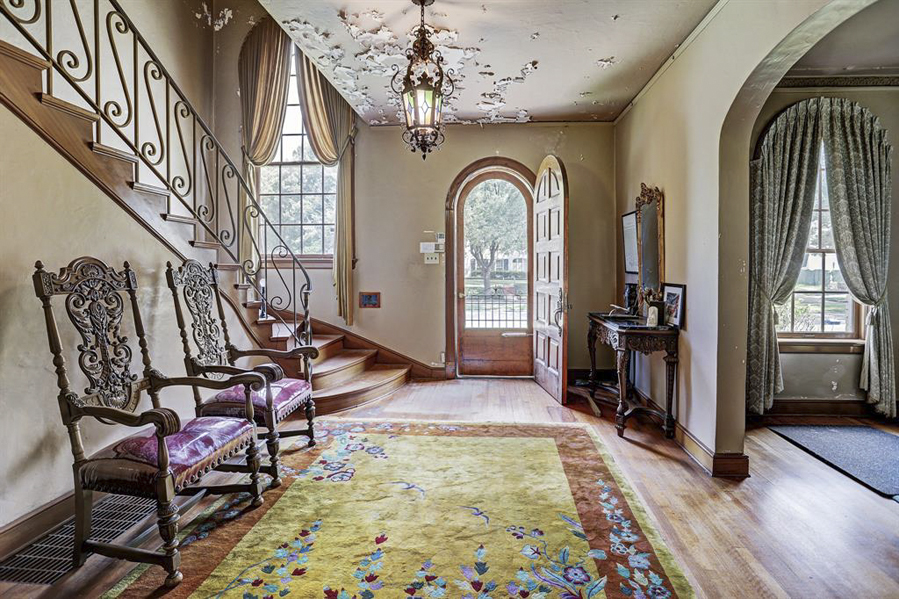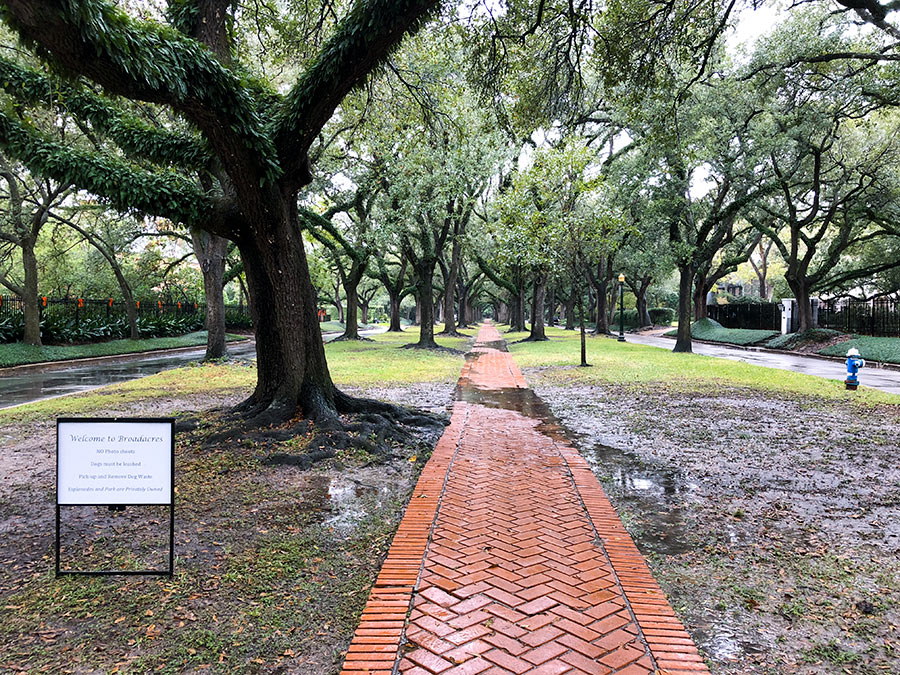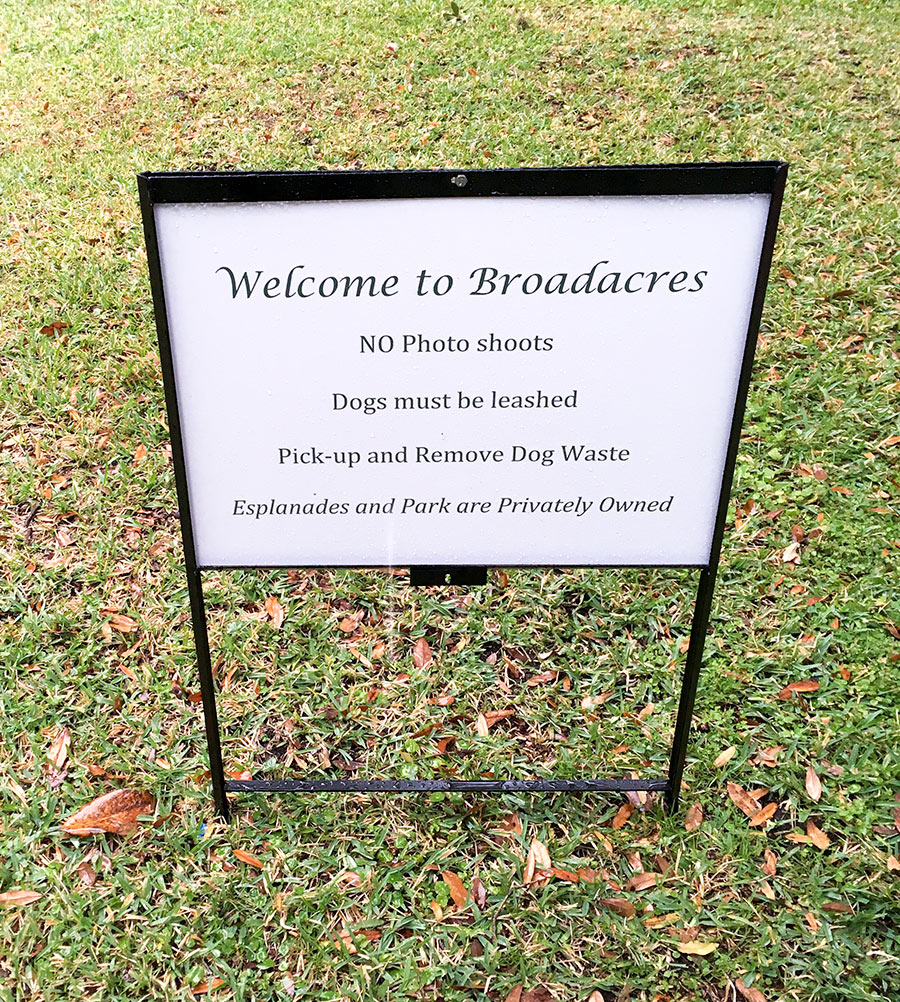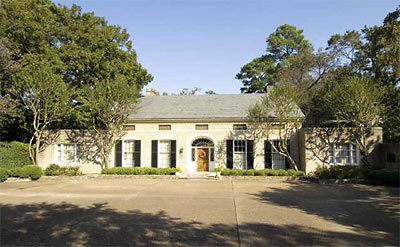

In early 2004, a heavy FedEx envelope showed up 1753 North Blvd. for Meyer Minchen, the 81-year-old vet who’d lived there since the house was built. He busted it open. Inside was the Distinguished Flying Cross, along with 2 other medals the Air Force had decided to pin on Minchen 6 decades after the fact. When the Chronicle‘s Thom Marshall came knocking later that year to get the story, Minchen told him he already had 3 air medals in his collection but decided to request a review of his service records because why not. “Equipped with powerful searchlights,” the planes Minchen piloted “flew a mere 500 feet above the water looking for signs of enemy subs,” wrote Marshall.
The house has won some medals, too:


 “In a way, this is just the latest battle in a hundred year old fight. On a Preservation Houston tour of Broadacres (where we trespassed all over the esplanades), it was pointed out that the neighborhood was originally designed as a closed loop with the only access to the city via Parkway to the east. Houston, however, viewed the streets as public and forced the developers to cede ROW through the lots on the western side of the loop to connect North and South Blvds to their counterparts in the west. This is why North and South Blvds pinch weirdly right around West Blvd. — when you’re ceding expensive land, you only give the minimum required. . . .” [
“In a way, this is just the latest battle in a hundred year old fight. On a Preservation Houston tour of Broadacres (where we trespassed all over the esplanades), it was pointed out that the neighborhood was originally designed as a closed loop with the only access to the city via Parkway to the east. Houston, however, viewed the streets as public and forced the developers to cede ROW through the lots on the western side of the loop to connect North and South Blvds to their counterparts in the west. This is why North and South Blvds pinch weirdly right around West Blvd. — when you’re ceding expensive land, you only give the minimum required. . . .” [ The Houston Public Works department confirms in a
The Houston Public Works department confirms in a  The Broadacres Homeowners Association has removed all signs posted on the esplanades along North, South, and West boulevards welcoming visitors and telling them photoshoots are prohibited. As to whether the esplanades are public or private property — that’s still up in the air: “
The Broadacres Homeowners Association has removed all signs posted on the esplanades along North, South, and West boulevards welcoming visitors and telling them photoshoots are prohibited. As to whether the esplanades are public or private property — that’s still up in the air: “ The president of the Broadacres Homeowners Association, Cece Fowler, tells the Houston Chronicle’s Diane Cowen last weekend that the neighborhood’s esplanades, as well as the park along Parkway Dr., are owned by the HOA. However, Cowen says that according to the City of Houston, the esplanades are part of the city’s Adopt-An-Esplanade program, making them public right-of-way. The dispute continues:Â “
The president of the Broadacres Homeowners Association, Cece Fowler, tells the Houston Chronicle’s Diane Cowen last weekend that the neighborhood’s esplanades, as well as the park along Parkway Dr., are owned by the HOA. However, Cowen says that according to the City of Houston, the esplanades are part of the city’s Adopt-An-Esplanade program, making them public right-of-way. The dispute continues: “ “As a close relative of a Broadacres resident I will report what I know. Yes, the esplanades are privately owned and maintained by the homeowners and the signs are legal. The reason for the signs was the volume of people taking pictures. I have lived there for 15+ years and it has never been this bad. In the evenings you will have 2, 3, or 4 groups of people on each block taking pictures and it’s not just people that are the problem, it’s all of the props (sofa, chairs, tables, GLITTER, lighting) that they bring with them too. As some commenters have pointed out, some homeowners have approached those taking pictures and gotten back a lot of attitude and some form of “This is public property.†Err, well, no it isn’t actually. The signs were a compromise to discourage further pictures and serve as an initial educational campaign. If it backfires or the signs are ignored there will most likely be some sort of security enforced permitting in place or, the nuclear option, buying out the streets from the city and gating the neighborhood.” [
“As a close relative of a Broadacres resident I will report what I know. Yes, the esplanades are privately owned and maintained by the homeowners and the signs are legal. The reason for the signs was the volume of people taking pictures. I have lived there for 15+ years and it has never been this bad. In the evenings you will have 2, 3, or 4 groups of people on each block taking pictures and it’s not just people that are the problem, it’s all of the props (sofa, chairs, tables, GLITTER, lighting) that they bring with them too. As some commenters have pointed out, some homeowners have approached those taking pictures and gotten back a lot of attitude and some form of “This is public property.†Err, well, no it isn’t actually. The signs were a compromise to discourage further pictures and serve as an initial educational campaign. If it backfires or the signs are ignored there will most likely be some sort of security enforced permitting in place or, the nuclear option, buying out the streets from the city and gating the neighborhood.” [
 “I have always felt that this North Boulevard house was the one that changed the way Houston looked at decor and antiques,” writes West U design blogger Joni Webb about a stucco mansion in Broadacres by Rice University architect William Ward Watkin, who designed it in 1923 for a drug-company executive after a 4-month inspirational European tour. The property at 1318 North Blvd. later served for more than a decade as the home of Tootsie’s founder Micky Rosmarin, who died after a heart attack last month; it’s now up
“I have always felt that this North Boulevard house was the one that changed the way Houston looked at decor and antiques,” writes West U design blogger Joni Webb about a stucco mansion in Broadacres by Rice University architect William Ward Watkin, who designed it in 1923 for a drug-company executive after a 4-month inspirational European tour. The property at 1318 North Blvd. later served for more than a decade as the home of Tootsie’s founder Micky Rosmarin, who died after a heart attack last month; it’s now up 